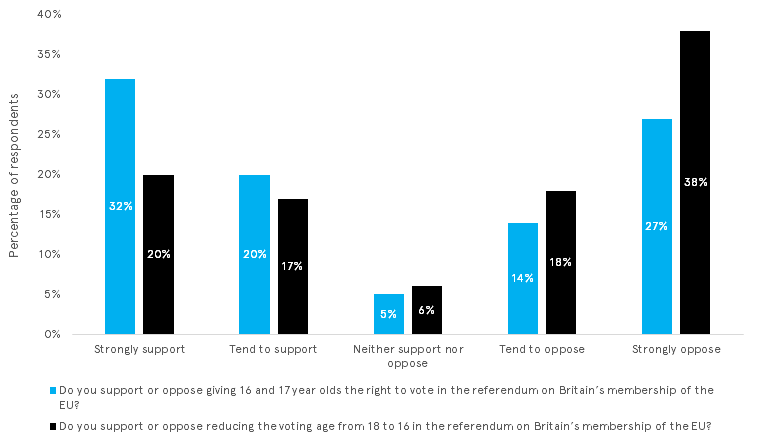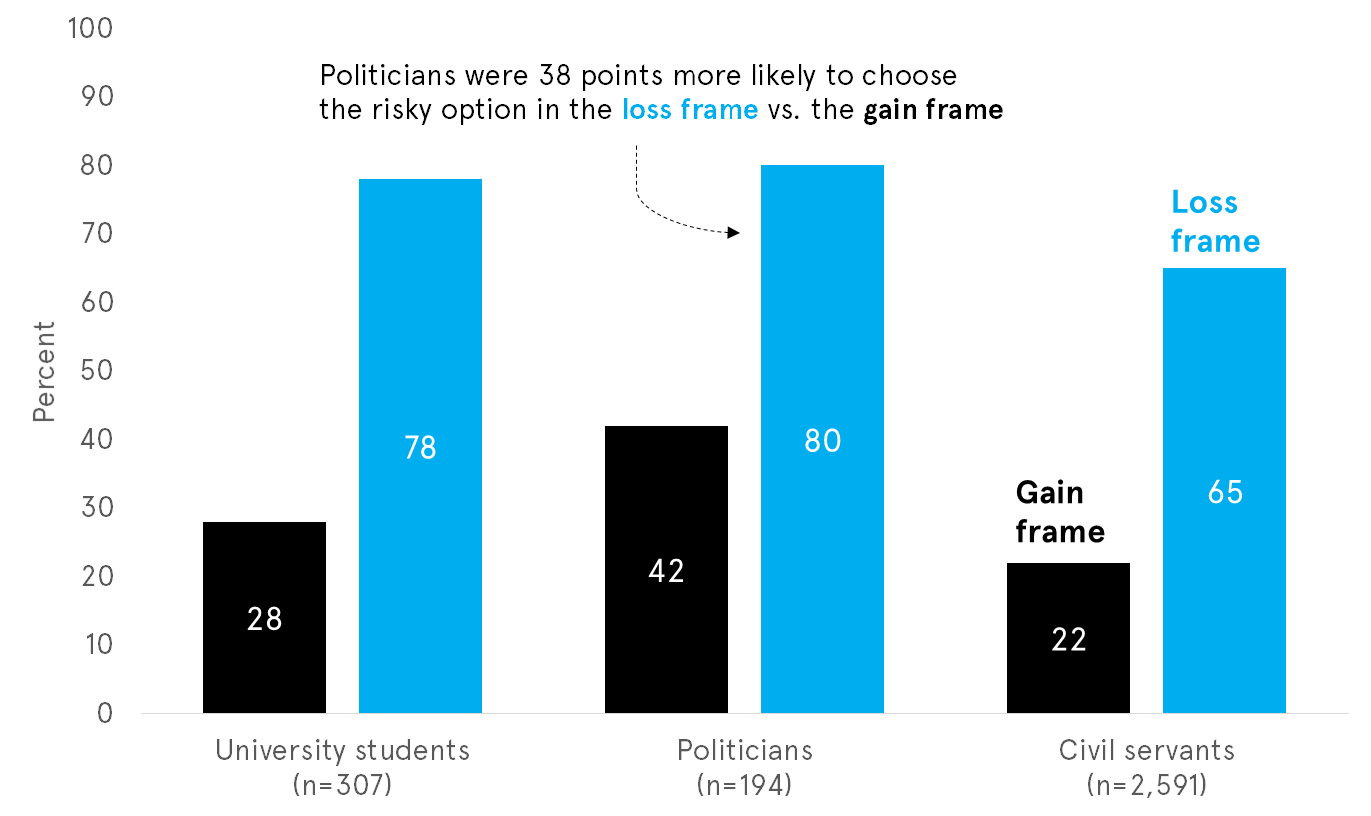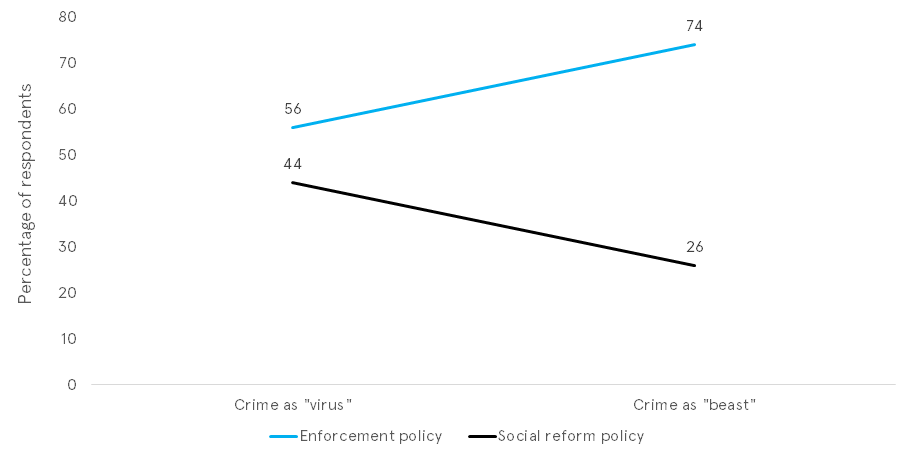This is the second blog in our Behavioural Government series, which explores how behavioural insights can be used to improve how government itself works.
‘Framing effects’ are when people’s views about something change depending on how it is described. Adopting different frames can greatly affect how people perceive a problem and what they consider to be relevant facts.
For example, a recent Ipsos MORI survey shows how different frames can change people’s views about important political issues. The survey asked an essentially identical question to two similar groups of British adults, but found that:
- a majority of people (56%) in the first group opposed “reducing the voting age from 18 to 16”.
- a majority (52%) in the second group supported “giving 16 and 17 olds the right to vote.”
The first question frames the issue as a threat to the status quo; the second frames it as recognising rights. These different frames were enough to flip the majority from opposing to supporting the policy. Figure 1 shows the full results.
Figure 1. Respondents views on lowering the voting age in a 2015 Ipsos MORI poll

Different frames can also affect the choices of politicians and government officials. Figure 2 shows that these groups were 2-3 times more likely to choose a risky policy to combat the outbreak of a disease when it was described in terms of losses (i.e. the number of people the policy might prevent from dying) rather than gains (i.e the number of people it might save) – even though the statistics underlying these different options were identical. These results replicated the findings of the original study which gave the same decision task to university students.
Figure 2. University students, politicians, and civil servants were all more like to choose a risky policy option when it emphasised losses rather than gains

There is another dimension to framing which can have a profound effect on policy making. This is when framing doesn’t just highlight aspects of an issue, but also binds them together into a coherent narrative, often by providing a powerful governing image or metaphor.
For example, a recent study found that people’s preferred policies for addressing a hypothetical crime problem varied depending on whether it was described as a beast ‘preying on’ a city, or a virus ‘infecting’ the city (identical crime statistics accompanied both descriptions).
Figure 3 shows the results. People who saw the ‘beast’ description were 3 times more likely (74% vs 26%) to prefer an ‘enforcement’ policy of hiring police officers and building jails to a ‘social reform’ policy of addressing root causes. Similar results were also found in a German-language replication of this experiment.
Figure 3. People are more likely to recommend ‘enforcement’ policies for addressing crime when the problem is described as a ‘beast’ rather than a ‘virus’

Framing problems in this way can lead to intense policy conflict and deadlock, because different metaphors imply different “obvious” solutions – to stop a virus, you need to clean the environment, but to stop a wild beast you need to catch it and lock it up.
This is concerning, because we often experience these kind of frames outside our conscious attention and reasoning. This can mean that people who are using opposing frames disagree strongly about what should be done to solve a problem, and find it very difficult to engage and compromise with each other (because the other side “just won’t listen” to how they’re framing the issue).
As part of the Behavioural Government project, we are looking into whether re-framing could help build consensus and overcome deadlocks like these – as well as helping policy makers create better policies by allowing them to re-frame a policy and identify its potential flaws.

